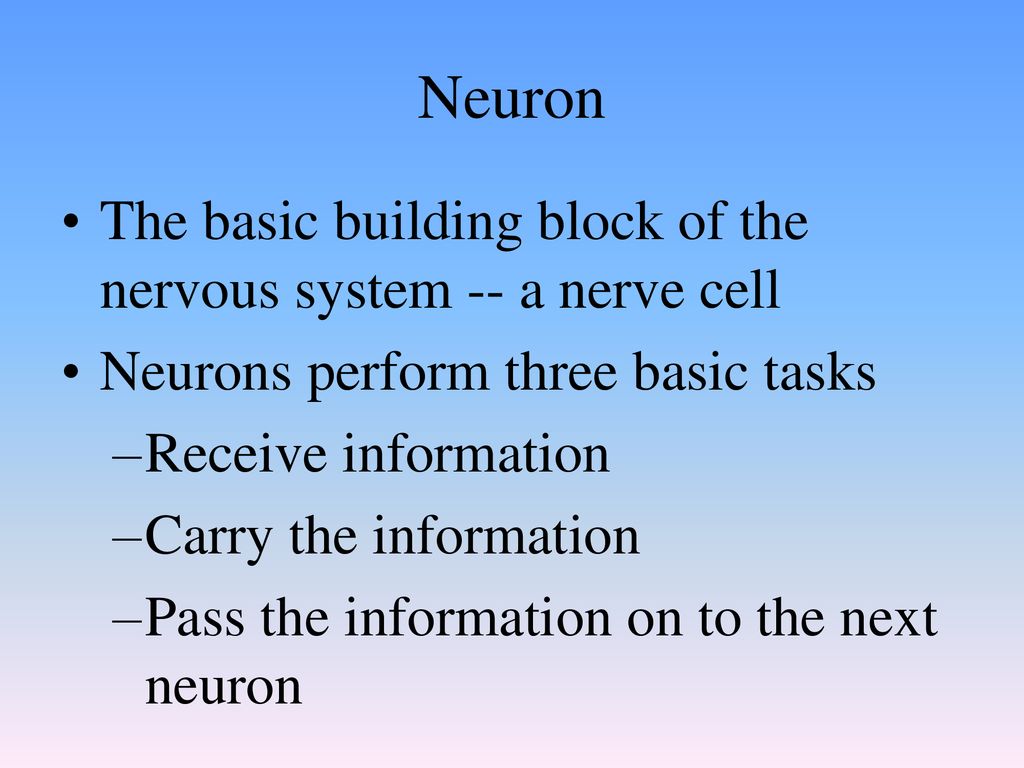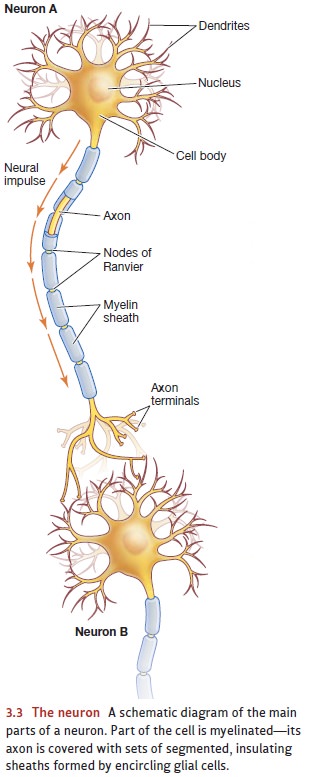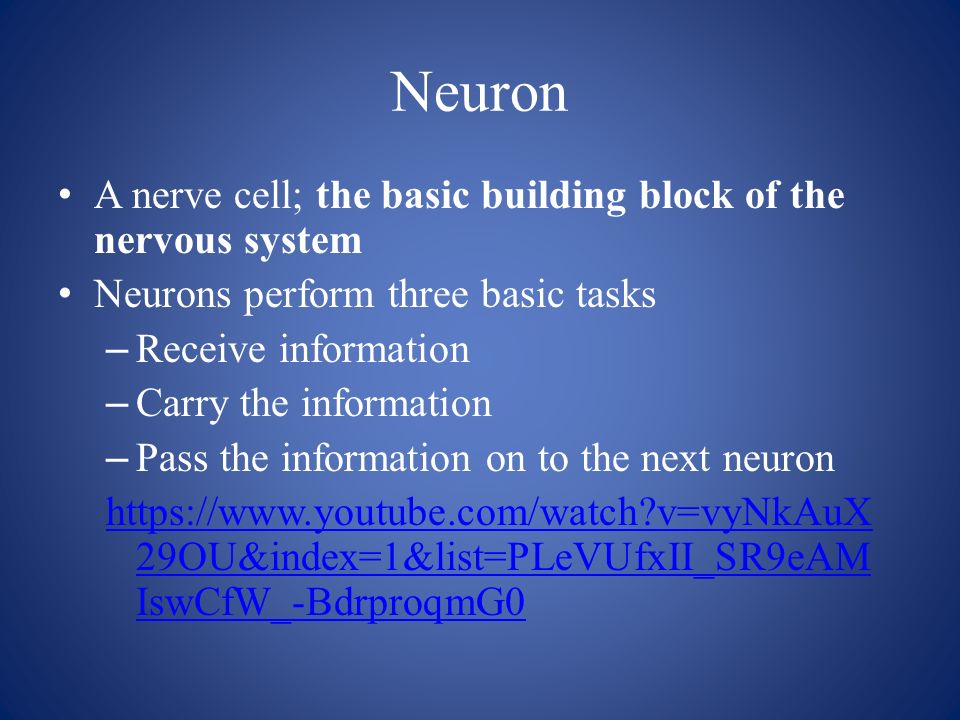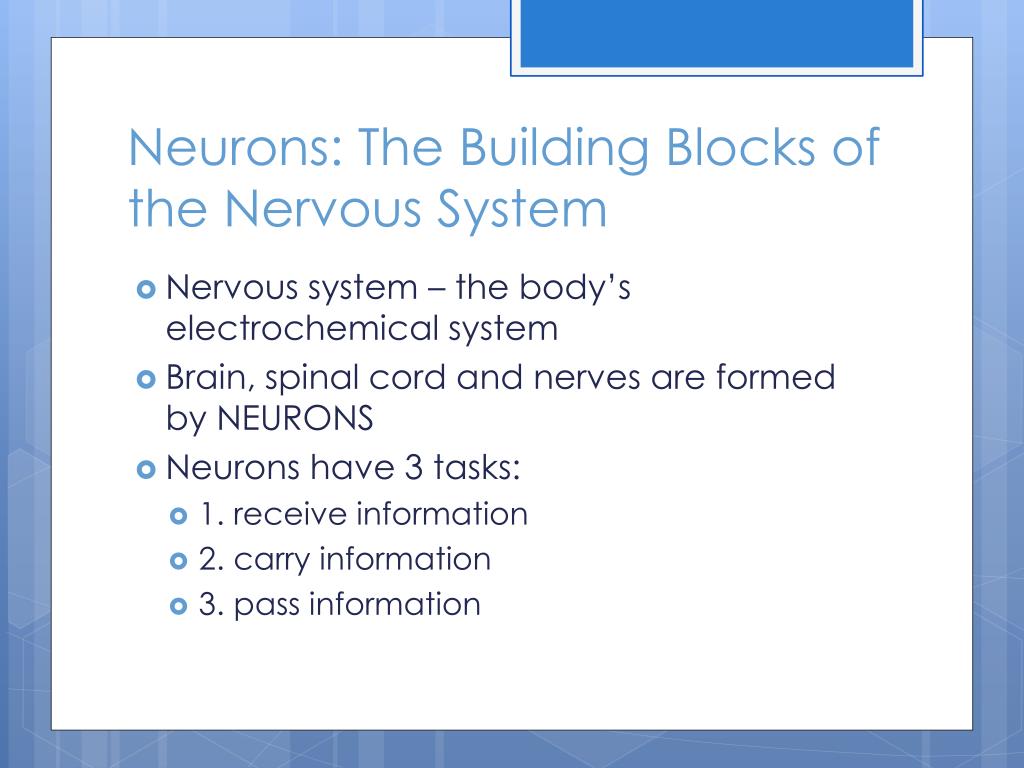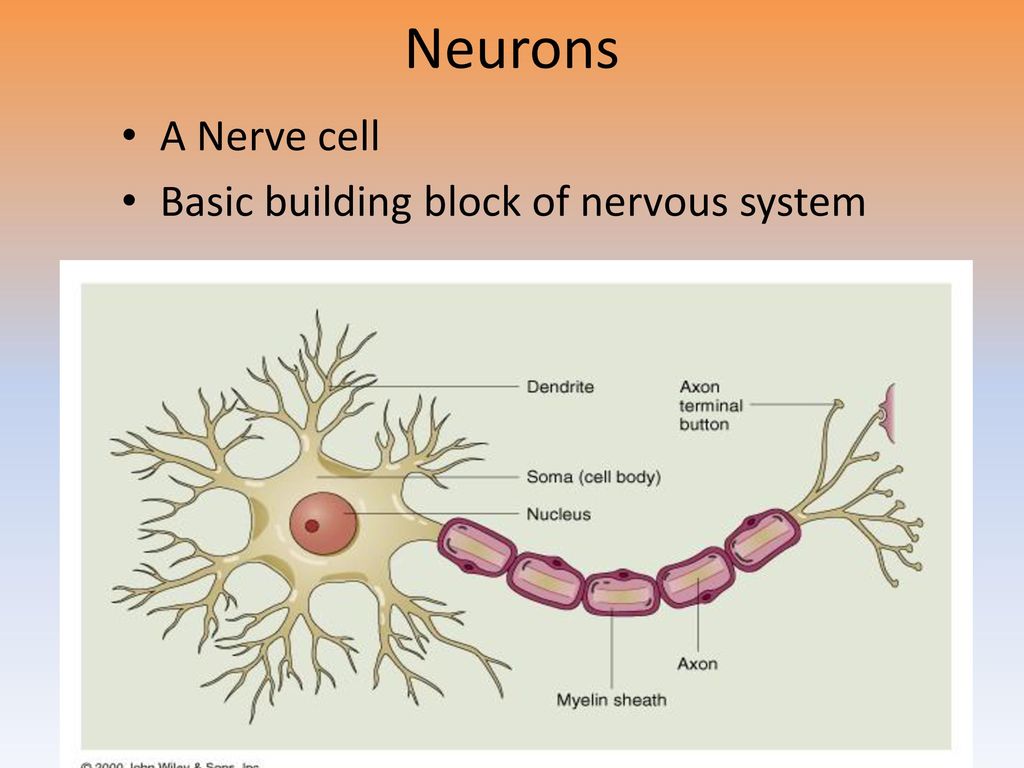The Basic Building Blocks Of The Nervous System Are The
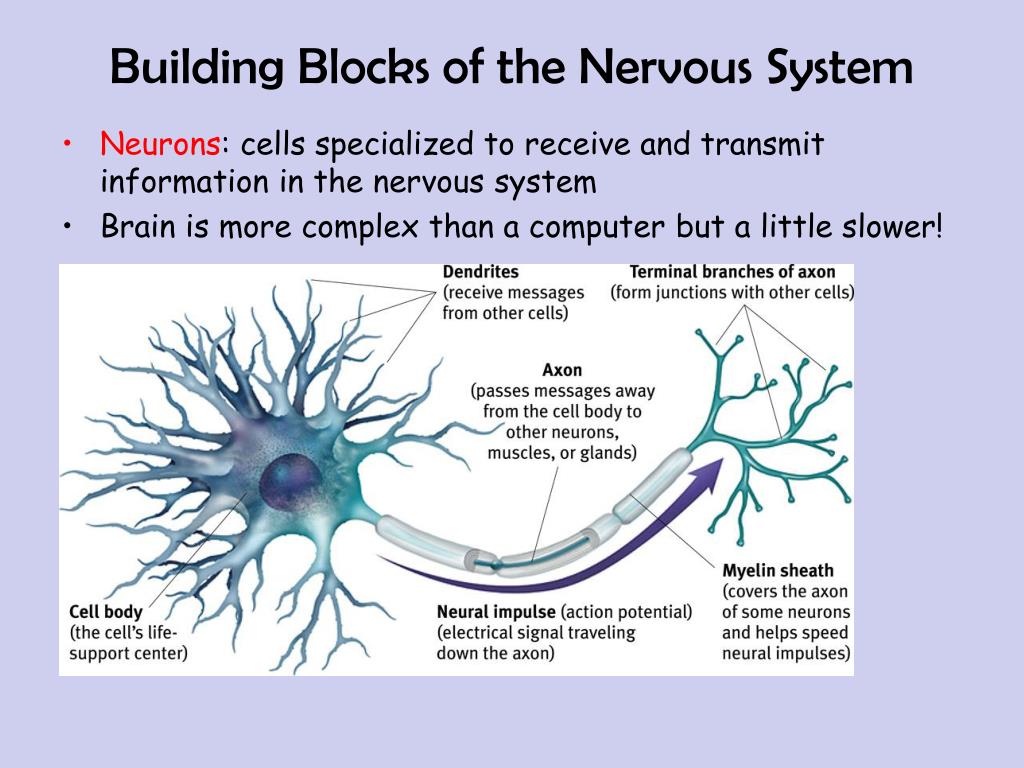
Imagine a bustling city at dawn. Cars are just beginning to fill the streets, lights flicker on in homes, and the hum of activity gradually rises. Now, envision that this city is you, and the cars, lights, and humming are all signals whizzing around within your intricate nervous system, allowing you to perceive, think, and act.
At the heart of this complex network are the neurons, the fundamental building blocks responsible for transmitting information throughout the body. These tiny yet powerful cells are the foundation of everything we do, feel, and experience.
This article will delve into the fascinating world of neurons, exploring their structure, function, and the crucial role they play in shaping our lives.
The Neuron: A Cellular Symphony
The neuron, also known as a nerve cell, is the basic functional unit of the nervous system. Its primary role is to transmit information in the form of electrical and chemical signals to other neurons, muscles, or glands.
Understanding the structure of a neuron is key to understanding how it functions. A typical neuron consists of three main parts: the cell body (soma), dendrites, and an axon.
The Soma: The Neuron's Control Center
The cell body, or soma, is the neuron's core. It contains the nucleus and other essential organelles necessary for cell survival and function.
Think of it as the neuron's control center, managing its metabolic processes and housing the genetic material that dictates its activities.
Dendrites: Receiving the Message
Dendrites are branching extensions that sprout from the cell body. Their role is to receive signals from other neurons, acting like antennae capturing incoming messages.
These signals can be either excitatory, encouraging the neuron to fire, or inhibitory, preventing it from doing so.
The Axon: Transmitting the Signal
The axon is a long, slender projection that extends from the cell body. It's the neuron's primary output structure, responsible for transmitting signals to other neurons, muscles, or glands.
The axon terminal, the end of the axon, forms connections called synapses with other cells, allowing the signal to be passed on.
Many axons are covered in a fatty substance called myelin, which acts as an insulator and speeds up the transmission of nerve impulses. These impulses "jump" between gaps in the myelin sheath called Nodes of Ranvier.
The Action Potential: The Neuron's Electrical Language
Neurons communicate through electrical signals called action potentials. These are rapid, temporary changes in the electrical potential of the neuron's membrane.
When a neuron receives enough excitatory signals, it reaches a threshold that triggers an action potential. This electrical impulse travels down the axon to the axon terminal.
At the axon terminal, the action potential triggers the release of neurotransmitters, chemical messengers that carry the signal across the synapse to the next neuron.
The entire process occurs in milliseconds, allowing for incredibly fast communication within the nervous system.
Neurotransmitters: Chemical Messengers of the Brain
Neurotransmitters are the chemical language of the nervous system. They are released from the axon terminal into the synapse and bind to receptors on the receiving neuron.
Different neurotransmitters have different effects. Some, like glutamate, are excitatory, promoting neuronal firing. Others, like GABA, are inhibitory, reducing the likelihood of firing.
Neurotransmitters such as dopamine and serotonin play key roles in mood, motivation, and reward. Disruptions in these neurotransmitter systems are implicated in various neurological and psychiatric disorders.
The Significance of Neurons: The Foundation of Our Being
The intricate network of neurons forms the basis of everything that makes us human. From our ability to think and reason to our capacity for emotion and creativity, neurons are at the center of it all.
They allow us to perceive the world around us through sensory input, process information, and generate appropriate responses. They control our movements, regulate our bodily functions, and store memories.
Damage to neurons, whether through injury, disease, or aging, can have profound consequences. Conditions like Alzheimer's disease, Parkinson's disease, and stroke all involve the loss or dysfunction of neurons, leading to a range of cognitive, motor, and sensory impairments.
Neuroplasticity: The Brain's Remarkable Adaptability
The brain is not a static organ. It's constantly changing and adapting in response to experience. This remarkable ability is known as neuroplasticity.
Neurons can form new connections, strengthen existing ones, and even rewire themselves after injury. This means that the brain has the potential to recover from damage and learn new skills throughout life.
Neuroplasticity highlights the importance of lifelong learning and mental stimulation. Engaging in mentally challenging activities can help to strengthen neural connections and maintain cognitive function.
The Future of Neuroscience: Unlocking the Secrets of the Brain
Neuroscience is a rapidly advancing field, with researchers constantly making new discoveries about the brain and nervous system.
Technological advancements, such as brain imaging techniques and genetic analysis, are providing unprecedented insights into neuronal function and the underlying causes of neurological disorders.
Scientists are developing new therapies to treat these conditions, including drugs that target specific neurotransmitter systems, gene therapies that repair damaged genes, and brain stimulation techniques that modulate neuronal activity.
The ultimate goal of neuroscience is to understand the brain well enough to prevent and cure neurological disorders, enhance cognitive function, and unlock the full potential of the human mind.
A World of Interconnectedness
As we reflect on the intricate dance of neurons within our nervous system, it's hard not to marvel at the elegance and complexity of nature. These tiny building blocks, working in concert, are the foundation of our thoughts, feelings, and experiences.
They remind us of the interconnectedness of all things, the way that even the smallest components can contribute to something vast and extraordinary.
Understanding the basic building blocks of the nervous system – the neurons – is not just a scientific pursuit; it's a journey into the heart of what makes us human.
